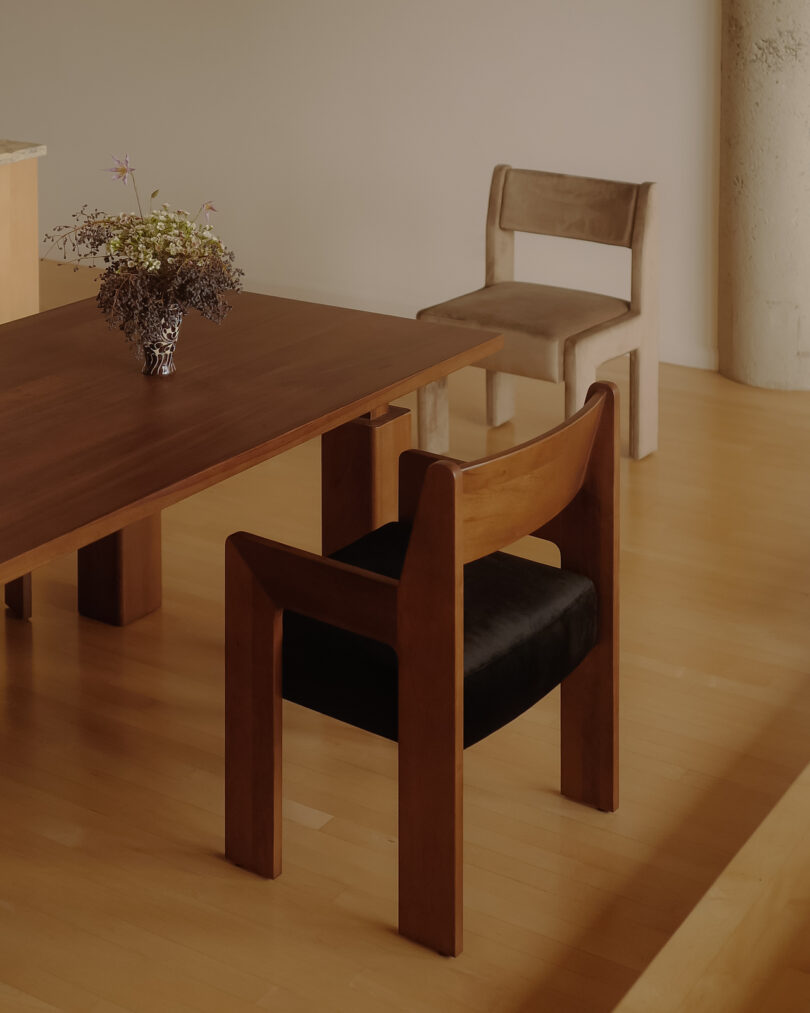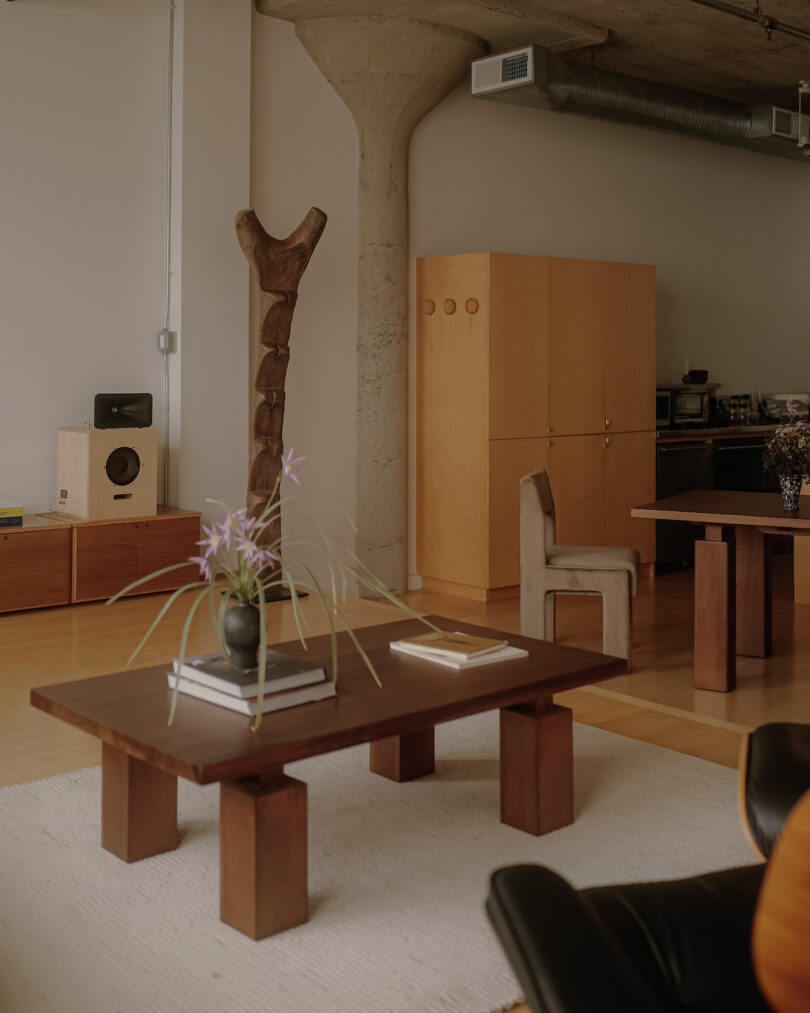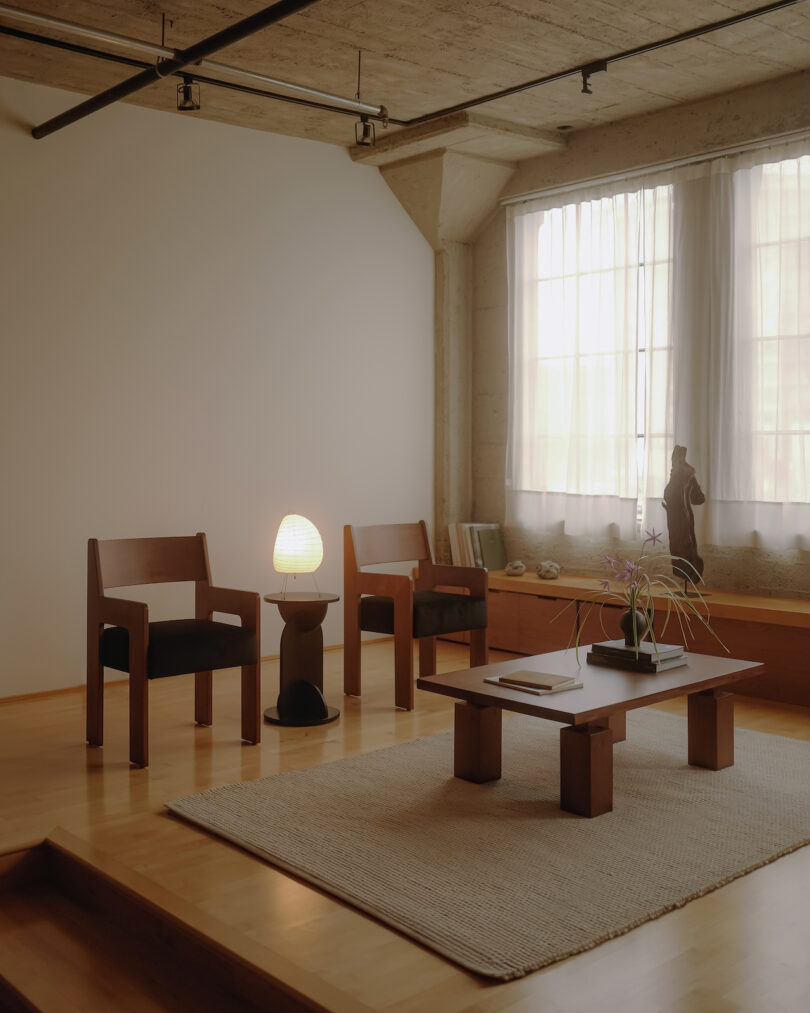Furniture designer Antares Yee was born in California, but his family came to the US in the 1980s – and his mother brought with her a lifetime of knowledge and practice in traditional Chinese joinery. “I grew up in a warehouse, because my mom was a furniture designer,” says Yee, the creative director and founder of the Sun at Six brand, which produces beautiful contemporary furniture with a focus on traditional joinery and woodworking. “She learned from a master in Beijing, forty-something years ago.” Yee’s own apprenticeship wouldn’t begin until later in life: “The majority of my earliest memories in the warehouse have to do with a guy named Tom, who worked with my mom and did a lot of the furniture touch-ups and repairs. We were young, so my little sister and I would run around the warehouse, bothering him – when you’re a kid, you don’t care about furniture. What you do care about is so many rolls of tape, the forklift – I just remember running around in these rolls of cardboard, messing it all up, climbing all the boxes like a jungle gym – having fun with Tom and everyone else just making a big mess.”
A sense of play and lightness is evident in Yee’s current work, a counterbalance to the seriousness of purpose that underpins the brand’s commitment to sustainable practices engrained in each piece. Using traditional Chinese joinery allows Yee to build furnishings without relying on nails or glue – and to work with, rather than against, wood’s natural properties including the way in which it can expand or contract depending on the environment. Yee’s joinery is designed to permit these variations wherever his furniture is used and in whatever climate extremes it encounters there.
But his sustainable practices only starts there – the heart of the matter, he says, is an effort to educate consumers and retailers on suitable resources, even if it means shifting long-standing ideas about what, for example, we think of as top quality materials. “There’s a big gap in knowledge between producers like ourselves who work on creating furniture and the consumers who buy the furniture,” Yee says. “As producers, we know that white oak takes 75 or 90 years – or even more – to reach maturity before you can chop down the tree and make furniture. With white ash, it’s more on the scale of 10 to 15 years. So there are all these details about sustainability that aren’t immediately apparent to the consumers. But we know that as producers and that gives us a lot of power, and with that, the responsibility to push sustainable practices. It’s not always easy to educate consumers. They’re not always interested – you’re just scrolling IG looking for furniture, and that’s all there is to it.” For more, tune in!
Diana Ostrom, who has written for Wallpaper, Interior Design, ID, The Wall Street Journal, and other outlets, is also the author of Faraway Places, a newsletter about travel.
Milkshake, DMTV (Design Milk TV)’s first regular series, shakes up the traditional interview format by asking designers, creatives, educators and industry professionals to select interview questions at random from their favorite bowl or vessel. During their candid discussions, you’ll not only gain a peek into their personal homeware collections, but also valuable insights into their work, life and passions.




























